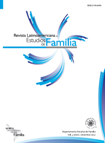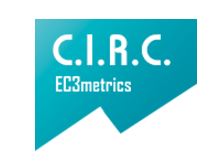Autores/as
Resumen
Resumen: Los complejos fenómenos de interés para los científicos de familia requieren el uso de enfoques cuantitativos y cualitativos. Los investigadores de las ciencias sociales se están cambiando a los diseños de métodos mixtos que combinan estos dos enfoques. La mezcla de métodos de investigación es muy prometedora para abordar los temas de la ciencia de familia, pero sólo si los investigadores entienden las opciones de diseño y los procedimientos que acompañan a esta opción metodológica. Las discusiones sobre los métodos mixtos en la literatura de la ciencia de familia son difíciles de localizar, y poco se ha escrito acerca de cómo los científicos de familia aplican este enfoque en la práctica. Este artículo presenta una visión general de los métodos de investigación mixtos, incluyendo su definición, la terminología y los tipos de diseño, y examina cómo se está utilizando con éxito, y se publica en revistas de investigación de familia. Las autoras revisaron la aplicación de diseños de métodos mixtos en 19 estudios, analizan las características de diseño y los problemas que surgieron durante la ejecución. Ellas concluyen con recomendaciones para los científicos de familia considerando el uso de este enfoque. (1543)
Citas
Campbell, C. L. y A. S. Demi. 2000. Adult children of fathers missing in action (MIA): Anexamination of emotional distress, grief, and family hardiness. Family Relations 49. No. 3: 267-276.
Carr, D.2005.The psychological consequences of midlife men’s social comparisons with their young adult sons. Journal of Marriage and Family 67. No.1:240-250.
Coleman, M. ed. Journal of Marriage and the Family 57, No. 4, 1995.
Creswell, J. W. 1999. Mixed-method research: Introduction and application. En Handbook of educational policy, ed. G. J. Cizek, 455-472. San Diego, CA: Academic Press.
________. 2005. Educational research: Planning, conducting, and evaluating quantitative and qualitative research. 2nd ed. Upper Saddle River, NJ: Pearson Education.
Creswell, J. W., M. D. Fetters y N. V. Ivankova. 2004. Designing a mixed methods study in primary care. Annals of Family Medicine 2, No. 1: 7-12.
Creswell, J. W., M. D. Fetters, V. L. Plano Clark y A. Morales. In press. Nesting qualitative data in health sciences intervention trials: A mixed methods application. En Mixed methods research for nursing and the health sciences, eds. S. Andrew y L. Halcomb. Oxford, UK: Blackwell.
Creswell, J. W., L. F. Goodchild y P. P. Turner. 1996. Integrated qualitative and quantitative research:Epistemology, history, and designs. En Higher education: Handbook of theory and research, Vol. 11, ed. J. C. Smart, 90-136. New York: Agathon.
Creswell, J. W. y V. L. Plano Clark. 2007). Designing and conducting mixed methods research. Thousand Oaks, CA: Sage.
Creswell, J. W. V. L. Plano Clark, M. L. Gutmann y W. E. Hanson. 2003. Advanced mixed methods research designs. En Handbook of mixed methods in social and behavioral research, eds. A. Tashakkori y C. Teddlie, 209-240. Thousand Oaks, CA: Sage.
Creswell, J. W., A. Tashakkori, K. D. Jensen y K. L. Shapley. 2003. Teaching mixed methods research: Practices, dilemmas, and challenges. En Handbook of mixed methods in social and behavioral research, eds. A. Tashakkori y C. Teddlie, 619-637. Thousand Oaks, CA: Sage.
Dalla, R. L. y W. C. Gamble. 1997. Exploring factors related to parenting competence among Navajo teenage mothers: Dual techniques of inquiry. Family Relations 46, No. 2: 113-121.
Gibson-Davis, C. M., K. Edin y S. McLanahan. 2005. High hopes but even higher expectations: The retreat from marriage among low-income couples. Journal of Marriage and Family 67, No. 5: 1301-1312.
Gomel, J. N., B. J. Tinsley, R. D. Parke y K. M. Clark. 1998. The effects of economic hardship on family relationships among African American, Latino, and Euro-American families. Journal of Family Issues 19, No. 4: 436-467.
Greene, J. C. 2005. Synthesis: A reprise on mixing methods. En Discovering successful pathways in children’s development: Mixed methods in the study of childhood and family life, ed. T. S. Weisner, 405-419. Chicago: University of Chicago Press.
Greene, J. C. y V. J. Caracelli. eds. 1997. Advances in mixed-method evaluation: The challenges and benefits of integrating diverse paradigms. En New directions for evaluation. Vol. 74. San Francisco: Jossey-Bass. Mixed Methods App roaches in Family Science Research 1565.
Greene, J. C., V. J. Caracelli y W. F. Graham. 1989. Toward a conceptual framework for mixed- method evaluation designs. Educational Evaluation and Policy Analysis 11, No. 3: 255-274.
Greenstein, T. N. 2006. Methods of family research. 2nd ed. Thousand Oaks, CA: Sage.
Handel, G. 1996. Family worlds and qualitative family research: Emergence and prospects of wholefamily methodology. En The methods and methodologies of qualitative family research, eds. M. B. Sussman y J. F. Gilgun, 335-348. Binghamton, NY: Haworth.
Hanson, W. E., J. W. Creswell, V. L. Plano Clark, K. P. Petska y J. D. Creswell. 2005. Mixed methods research designs in counseling psychology. Journal of Counseling Psychology 52, No. 2: 224-235.
Hendrickson Christensen, D. y C. M. Dahl. 1997. Rethinking research dichotomies. Family and Consumer Sciences Research Journal 25, No. 3: 269-285.
Javo, C., R. Alapack, S. Heyerdahl y J. A. Ronning. 2003. Parental values and ethnic identity in indigenous Sami families: A qualitative study. Family Process 42, No. 1: 151-164.
Javo, C., J. A. Ronning y S. Heyerdahl. 2004. Child-rearing in an indigenous Sami population in Norway: A cross-cultural comparison of parental attitudes and expectations. Scandinavian Journal of Psychology 45, No. 1: 67-78.
Jick, T. D. 1979. Mixing qualitative and quantitative methods: Triangulation in action. Administrative Science Quarterly 24: 602-611.
Katz, R. y A. Lowenstein. 1999. Adjustment of older Soviet immigrant parents and theiradult children residing in shared households: An intergenerational comparison. Family Relations 48, No. 1: 43-50.
Knodel, J. y C. Saengtienchai. 2005. Older-aged parents: The final safety net for adult sons and daughters with AIDS in Thailand. Journal of Family Issues 26, No. 5: 665-698.
Lavee, Y., A. Ben-David y F. Azaiza. 1997. Israeli and Palestinian families in the peace process: Sources of stress and response patterns. Family Process 36, No. 3: 247-263.
Mangen, D. J. 1995. Methods and analysis of family data. En Handbook of aging and the family, eds. R. Blieszner y V. Hilkevitch Bedfor, 148-177. Westport, CT: Greenwood.
Marshall, T. y P. Solomon. 2004. Provider contact with families of adults with severemental illness: Taking a closer look. Family Process 43, No. 2: 209-216.
Mason, M. A., S. Harrison-Jay, G. M. Svare y N. H. Wolfinger. 2002. Stepparents: De facto parents or legal strangers? Journal of Family Issues 23, No. 4: 507-522.
McGraw, L. A., A. M. Zvonkovic y A. J. Walker. 2000. Studying postmodern families: A feminist analysis of ethical tensions in work and family research. Journal of Marriage and Family 62, No. 1: 68-77.
Mertens, D. M. 2003. Mixed methods and the politics of human research: The transformative– emancipatory perspective. En Handbook of mixed methods in social and behavioral research, eds. A. Tashakkori y C. Teddlie, 135-164. Thousand Oaks, CA: Sage.
Miall, C. E. y K. March. 2005a. Community attitudes toward birth fathers’ motives for adoption placement and single parenting. Family Relations 54, No. 4: 535-546.
________. 2005b. Open adoption as a family form. Journal of Family Issues 26, No. 3: 380-410.
Miles, M. B. y A. M. Huberman. 1994. Qualitative data analysis: An expanded sourcebook. 2nd ed.Thousand Oaks, CA: Sage.
Morgan, D. L. 1998. Practical strategies for combining qualitative and quantitative methods:Applications to health research. Qualitative Health Research 8, No. 3: 362-376.
Morse, J. M. 1991. Approaches to qualitative-quantitative methodological triangulation. Nursing Research 40: 120-123.
National Council on Family Relations Annual Conference. 2006. 2006 NSFR call for papers. Retrieved January 15, 2006, from http://www.ncfr.org/pdf/Call_for_Proposals.pdf 1566 Plano Clark et al. in Journal of Family Issues 29 (2008).
O’Brien, M. 2005. Studying individual and family development: Linking theory and research. Journalof Marriage and Family 67, No. 4: 880-890.
O’Cathain, A., E. Murphy y J. Nicholl. 2007. Integration and publications as indicators of “yield” from mixed methods studies. Journal of Mixed Methods Research 1, No. 2: 147-163.
Perlesz, A. L. y J. Lindsay. 2003. Methodological triangulation in researching families: Making sense of dissonant data. International Journal of Social Research Methodology 6, No. 1: 25-40.
Plano Clark, V. L. 2005. Cross-disciplinary analysis of the use of mixed methods in physics education research, counseling psychology, and primary care. Doctoral dissertation, University of Nebraska–Lincoln, 2005. Dissertation Abstracts International, 66, 02A.
Punch, K. F. 1998. Introduction to social research: Quantitative and qualitative approaches. London: Sage.
Rank, M. R. 1988, November. The blending of quantitative and qualitative data in family research.
Paper presented at the National Council of Family Relations Pre-Conference Workshop on Theory Construction and Research Methodology, Philadelphia, PA.
________. 1996. The blending of qualitative and quantitative methods in understanding childbearing among welfare recipients. En Qualitative methods in family research, eds. J. F. Gilgun, K. J. Daly y G.Handel, 281-300. Newbury Park, CA: Sage.
Richter, K. 1997. Child care choice in urban Thailand: Qualitative and quantitative evidence of the decision-making process. Journal of Family Issues 18, No. 2: 174-204.
Sale, J. E., L. H. Lohfeld y K. Brazil. 2002. Revisiting the quantitative-qualitative debate: Implications for mixed-methods research. Quality and Quantity 36: 43-53.
Sandelowski, M. 1996. Using qualitative methods in intervention studies. Research in Nursing and Health 19, No. 4: 359-364.
________. 2003. Tables or tableaux? The challenges of writing and reading mixed methods studies. En Handbook of mixed methods in social and behavioral research, eds. A. Tashakkori y C. Teddlie, 321-350.
Thousand Oaks, CA: Sage.
Shulha, L. M. y R. J. Wilson. 2003. Collaborative mixed methods research. En Handbook of mixed methods in social and behavioral research, eds. A. Tashakkori y C. Teddlie, 639-669. Thousand Oaks, CA: Sage.
Smith, J. K. y L. Heshusius. 1986. Closing down the conversation: The end of the quantitative-qualitative debate among educational inquirers. Educational Researcher 15, No. 1: 4-12.
Strazdins, L. y D. H. Broom. 2004. Acts of love (and work): Gender imbalance in emotional work and women’s psychological distress. Journal of Family Issues 25, No. 3: 356-378.
Struthers, C. B. y J. L. Bokemeier. 2000. Myths and realities of raising children and creating family life in a rural county. Journal of Family Issues 21, No. 1: 17-46.
Tashakkori, A. y C. Teddlie. 1998. Mixed methodology: Combining qualitative and quantitative approaches. Thousand Oaks, CA: Sage.
________. eds. 2003. Handbook of mixed methods in social and behavioral research. Thousand Oaks, CA:Sage.
Walker, A. J. ed. 2005. Theoretical and methodological issues in studying families [Special issue]. Journal of Marriage and Family 67, No. 4.
Weigel-Garrey, C. J., C. C. Cook y M. J. Brotherson. 1998. Children and privacy: Choice, control, and access in home environments. Journal of Family Issues 19, No. 1: 43-64.
Weine, S., K. Knafl, S. Feetham, Y. Kulauzovic, A. Klebic, S. Sclove et al. 2005. A mixed methods study of refugee families engaging in multiple-family groups. Family Relations 54, No. 4: 558-568.
Yin, R. K. 2003. Case study research: Design and methods. 3rd ed. Thousand Oaks, CA: Sage.

 PDF
PDF
 FLIP
FLIP




















